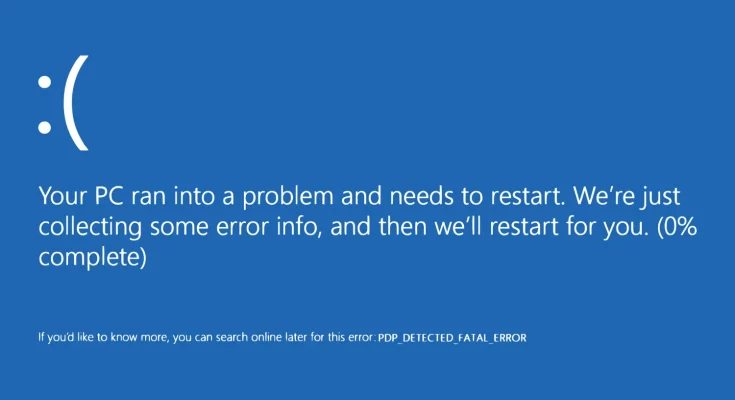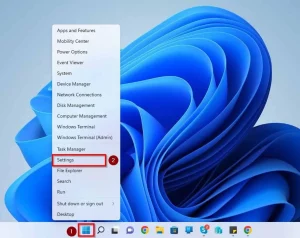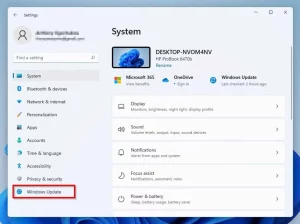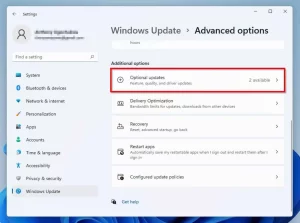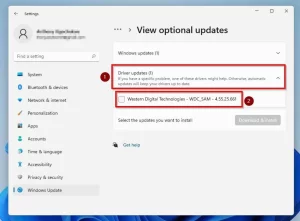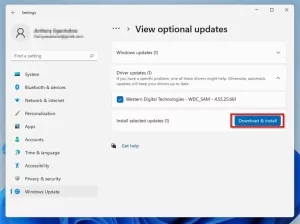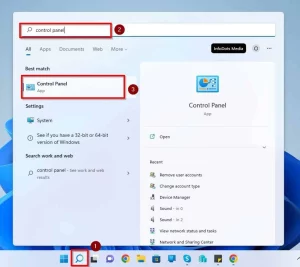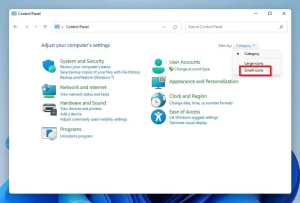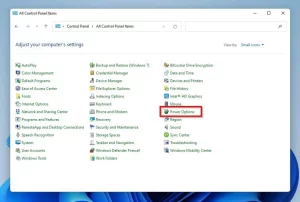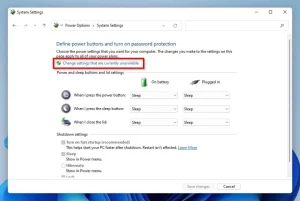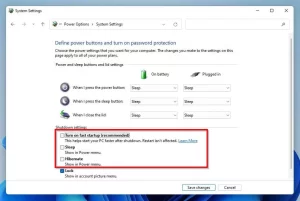Is your Windows 11 PC displaying the BSOD error driver power state failure? Not to fear, this tutorial includes several possible solutions to this problem. This post will essentially teach you four solutions to this problem. More specifically, you will discover how to resolve the issue by upgrading device drivers and removing the rapid startup option.
This instruction will also show you how to fix the problem by changing the power plan settings and running the system file checks (SFC).
Aside from that, the FAQ section of this guide contains answers to some of the most often-asked questions about this problem.
Updating Device Drivers Can Resolve Driver Power State Failure Errors In Windows 11
Outdated device drivers most often cause this BSOD issue. As a result, upgrading the outdated device drivers on your Windows 11 machine should resolve the issue Driver Power State Failure. The following processes show how to update device drivers in Windows 11 using Windows Update.
- Right-click the Start menu button on the Windows 11 taskbar and choose Settings from the menu that appears. To reach Settings in Windows 11, you can utilize the Windows key + I shortcut.
- When Settings appears on the left pane, click Windows Update.
- Then, click Advanced options in the Settings box’s right pane.
- Click Optional updates under Additional options.
- Then, under Driver updates, tick the box next to any available update.
- Finally, press the blue Download and install button. As a result, Windows will begin automatically downloading the driver update from the internet and installing it on your computer.
- Restart your Windows 11 PC after downloading and installing the driver update. Hopefully, this BSOD problem will no longer show on your Windows 11 machine.
If the issue persists, try the alternative remedies listed below.
By disabling Fast Startup, you may resolve the Driver Power State Failure Error in Windows 11.
Fast startup is a Windows feature that reduces boot time by not shutting down a machine completely. It is known, however, to cause compatibility difficulties, which may result in a driver power state failure BSOD error. Removing the function on your Windows 11 machine may be a viable solution to the problem. The methods below show how to disable Windows 11’s quick starting function.
- Click the Search button on the Windows 11 taskbar (magnifying glass symbol). Then, in the search box, type “control panel” (without the quotes) and pick Control Panel under Best match.
- Select Small icons from the View by drop-down menu at the upper right of the Control Panel window.
- Then, select Power Options.
- Then, click Choose what the power buttons do in the window’s left pane.
- After that, click Change currently unavailable settings.
- Uncheck the Turn on rapid startup (recommended), Sleep, and Hibernate boxes in the Shutdown settings area.
- Then, to save the changes, click the Save changes option.
- Finally, restart your Windows 11 machine to have the modifications take effect. As a result, the BSOD problem on your PC should be resolved.
If it isn’t, look at the alternatives in the sub-sections below.
- By modifying the power plan settings, you may resolve the driver power state failure error in Windows 11.
- Another option for resolving this problem on your Windows 11 PC is to change the power plan settings. To accomplish this, carefully follow the instructions outlined below.
- To launch the Run dialogue, press the Windows key + R.
- Then, in the Run input area, type “powercfg.cpl” (without the quotes) and press the enter key on your keyboard.
- Then, click Change plan settings opposite your computer’s current power plan.
- Then, choose Change advanced power settings.
- Then, to open Wireless Adapter Settings, double-click it. Expand Power Saving Mode by double-clicking it under Wireless Adapter Settings.
- Ensure that both On battery and Plugged in are set to Maximum Performance under Power Saving Mode.
- Then, please scroll to the bottom and double-click PCI Express to enlarge it. Also, expand Link State Power Management under PCI Express by double-clicking it.
- Then, under Link State Power Management, ensure that On battery and Plugged in are both set to Maximum Performance.
- Finally, press OK to preserve your changes. Restart your Windows 11 machine, and the problem should be resolved.
If the issue persists after attempting this solution, try the last option listed below.
Run System File Checker to resolve the Driver Power State Failure Error on Windows 11. (SFC)
You may also resolve this issue on your Windows 11 machine by running the system file checker. SFC will search for and repair any damaged system files causing this issue. Follow the steps below to run the system file checker on your Windows 11 PC.
- On your Windows 11 taskbar, click the Search button adjacent to the Start menu. Then, in the search area, put “cmd prompt” (without quotations).
- Right-click the Command Prompt application under the Best match result from your search and select Run as administrator.
- As a result, you should get a User Account Control (UAC) popup asking you to allow the software to make modifications to your device. To proceed, click Yes.
- When Command Prompt appears, enter the command line below and press the enter key on your keyboard.
- scannow /sfc
- Restart your computer after the scan is finished. Hopefully, this BSOD fault will be addressed.
Frequently Asked Questions – Driver Power State Failure Error
ALSO SEE: How to Get NFL Plus Free Trial? Easy Guide
1. What is the cause of the Driver Power State Failure Error?
Most of the time, this issue is caused by outdated device drivers. Other causes include defective system files, malfunctioning hardware, and incorrectly adjusted settings.
2. Why am I getting the Blue Screen of Death?
If you are continually experiencing a blue screen of death error on your Windows PC, it suggests your computer has driver software or hardware problems.
3. Does a Blue Screen of Death indicate a virus?
Some BSOD issues result from your computer being infected with a virus or malware. Yes, a blue screen of death can indicate a viral infection.
4. Is it possible for a GPU to cause a blue screen of death?
Yes, a broken or overheated GPU will likely generate a blue screen of death error.
5. Is Driver Power State Failure Caused By A BSOD?
The driver power state failure error is, indeed, a BSOD issue.
